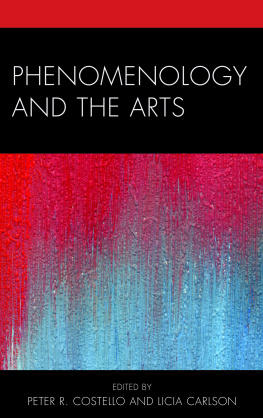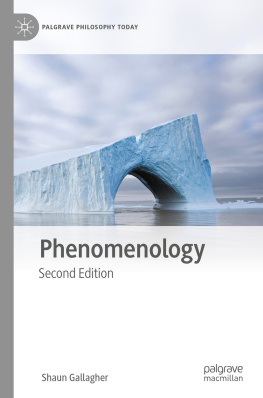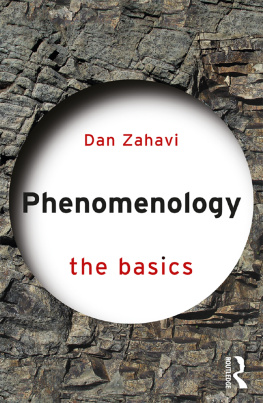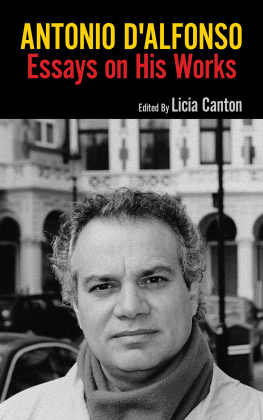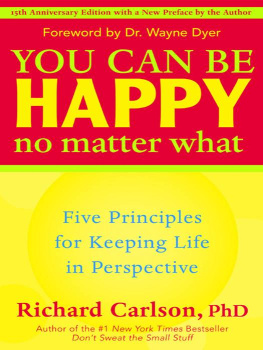Carlson Licia A - Phenomenology and the Arts
Here you can read online Carlson Licia A - Phenomenology and the Arts full text of the book (entire story) in english for free. Download pdf and epub, get meaning, cover and reviews about this ebook. year: 2012, publisher: Lexington Books, genre: Romance novel. Description of the work, (preface) as well as reviews are available. Best literature library LitArk.com created for fans of good reading and offers a wide selection of genres:
Romance novel
Science fiction
Adventure
Detective
Science
History
Home and family
Prose
Art
Politics
Computer
Non-fiction
Religion
Business
Children
Humor
Choose a favorite category and find really read worthwhile books. Enjoy immersion in the world of imagination, feel the emotions of the characters or learn something new for yourself, make an fascinating discovery.
- Book:Phenomenology and the Arts
- Author:
- Publisher:Lexington Books
- Genre:
- Year:2012
- Rating:5 / 5
- Favourites:Add to favourites
- Your mark:
- 100
- 1
- 2
- 3
- 4
- 5
Phenomenology and the Arts: summary, description and annotation
We offer to read an annotation, description, summary or preface (depends on what the author of the book "Phenomenology and the Arts" wrote himself). If you haven't found the necessary information about the book — write in the comments, we will try to find it.
Phenomenology and the Arts — read online for free the complete book (whole text) full work
Below is the text of the book, divided by pages. System saving the place of the last page read, allows you to conveniently read the book "Phenomenology and the Arts" online for free, without having to search again every time where you left off. Put a bookmark, and you can go to the page where you finished reading at any time.
Font size:
Interval:
Bookmark:
Phenomenology and the Arts
Phenomenology and the Arts
Edited by Licia Carlson
and Peter R. Costello
LEXINGTON BOOKS
Lanham Boulder New York London
Published by Lexington Books
An imprint of The Rowman & Littlefield Publishing Group, Inc.
4501 Forbes Boulevard, Suite 200, Lanham, Maryland 20706
www.rowman.com
Unit A, Whitacre Mews, 26-34 Stannary Street, London SE11 4AB
Copyright 2016 by Lexington Books
All rights reserved. No part of this book may be reproduced in any form or by any electronic or mechanical means, including information storage and retrieval systems, without written permission from the publisher, except by a reviewer who may quote passages in a review.
British Library Cataloguing in Publication Information Available
Library of Congress Cataloging-in-Publication Data Available
ISBN 978-1-4985-0650-2 (cloth : alkaline paper)
ISBN 978-1-4985-0651-9 (electronic)
 TM The paper used in this publication meets the minimum requirements of American National Standard for Information Sciences Permanence of Paper for Printed Library Materials, ANSI/NISO Z39.48-1992.
TM The paper used in this publication meets the minimum requirements of American National Standard for Information Sciences Permanence of Paper for Printed Library Materials, ANSI/NISO Z39.48-1992.
Printed in the United States of America
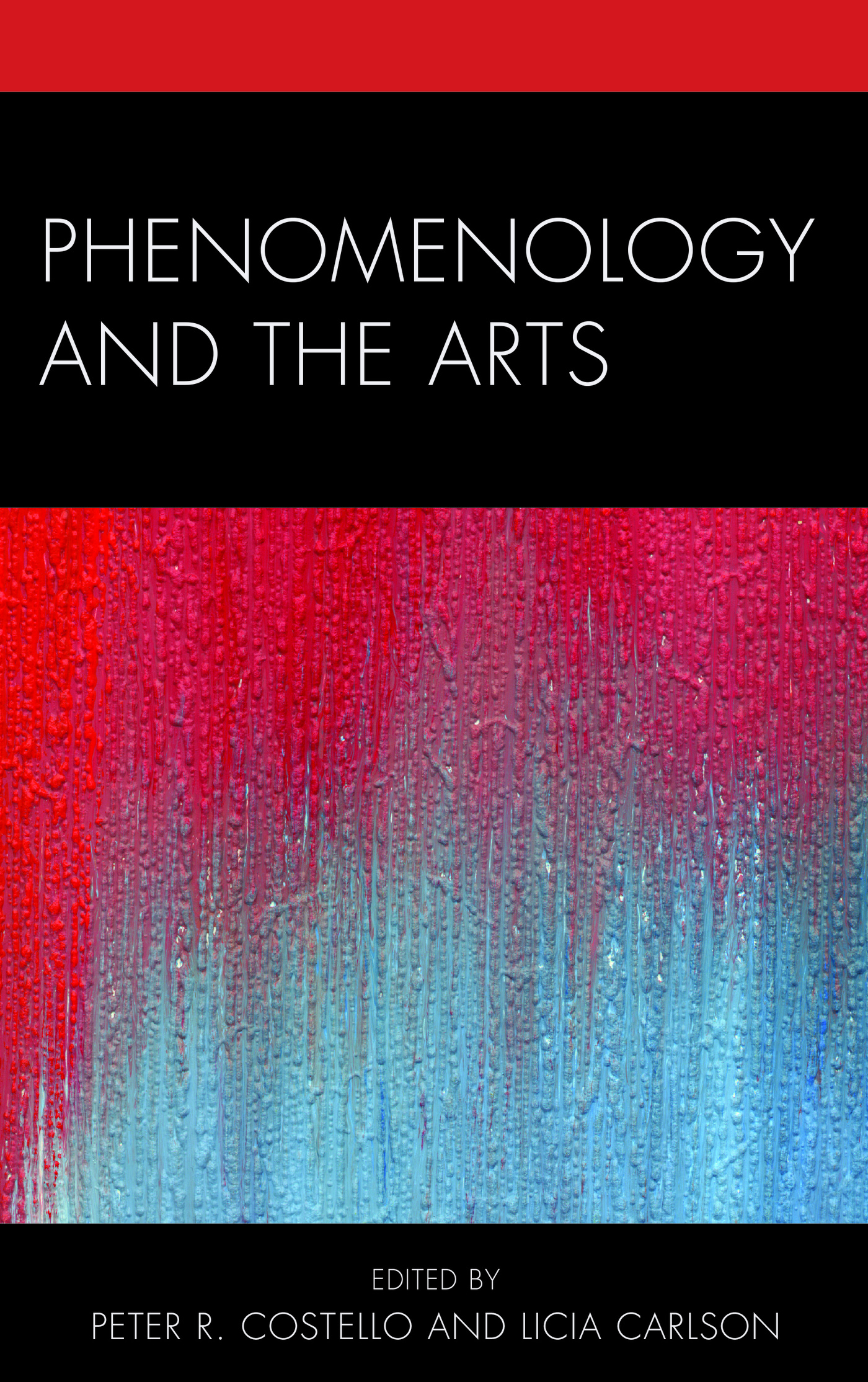
Peter R. Costello
What is phenomenology? How does phenomenology work when it faces the arts? Let us take up the questions one at a time.
Phenomenology is, first and foremost, a method ofpaying attention to things in our experience. It is a way of perceiving.
Along with its method of paying attention, phenomenology is, secondly, a manner ofdescription of what appears when we are attentive to experience. It is also a way of writing.
Phenomenology is, therefore, combining these two: a way of attending to and of rendering the significance of things. Phenomenology is a perceiving and a writing.
But phenomenology does not just attend to and render things outside of the perceiver. Phenomenology also renders its own attending. It writes the perceiving within the perceived.
And phenomenology also attends to its own rendering. It notices, develops, revises, and contests the writing, the language, it uses to render experience more explicit.
In its attending and rendering, phenomenology thereby attends to and describes things and itself together, in a zig-zag fashion. And, by means of that movement between intentional and reflexive orientations, phenomenology is, on the whole, engaged in a process of making explicit what is implicit in the meaning of human experience.
However, giving this kind of answer to the question of the essence of phenomenology, while true, is not sufficiently helpful to introduce those who do not yet know enough about what phenomenology is in order to hear what is implied in the answer. For, of course, a good deal of philosophy could be said to be a methodical attention to, and a manner of describing, the meaning of our experience. A good deal of philosophy explicates in order to move, as Aristotle would say, from wonder toward wisdom.
Let us start again, then, to answer the question about the essence of phenomenology. But this time let us make a slight revision to our initial question. Instead of asking what phenomenology is, let us ask how phenomenology works.
In some way, at the very least historically, the answer to the question of how phenomenology works lies within the texts of Edmund Husserl. In my own opinion, Husserls texts do not constitute simply the historical past of phenomenology. Rather, I would argue, all of the texts or figures of phenomenology continue, even now, to echo Husserl. In particular they continue to develop Husserls three volumes entitled Ideas: General Introduction to a Pure Phenomenology and his principle of all principles, which is expressed there as the following: whatever presents itself in intuition in primordial form (as it were in its bodily reality), is simply to be accepted as it gives itself out to be, though only within the limits in which it then presents itself.
Husserls principle of all principles remains a touchstone, a primordial form of the way in which phenomenology approaches the primordial forms within perception. With Husserl, then, we phenomenologists continue to say that things present themselves to our perception. And we continue to aim at the primordial appearance of that which appears. We continue to agree that our acceptance or description of things significance follows along with the way the things give themselves out to be.
Within our more developed phenomenology, we still agree with Husserls implication that things have a kind of agency: they give themselves. Things have a flesh, a bodily reality as it were, and, as having a flesh, things also have limits in a manner similar to those limits of our own bodies. So a large part of the task of phenomenology has always been, and continues to be, to accept the given flesh of things and to respect the limits of things self-presentation. We remain loyal not just to Husserl but to the self-directed manner of things appearance that he noticed. And we bear that out within the phenomenological descriptions we bring to bear on things.
Martin Heidegger still evokes Husserls principle of all principles, I think, in his 19551956 lectures entitled The Principle of Reason. For the Heidegger of those lectures, the principle of all principles under explicit consideration is of course not Husserls but that of Leibniz, i.e., nothing is without its reason. But if we look carefully at what Heidegger is doing in those lectures, at what he is implying, we can see that Heidegger is moving beyond Leibnizs particular principle toward a reflection on any principle of all principles. In so doing, Heidegger argues that reflecting on the ontological status and deployment of any principle of all principles will also disclose something to us about our own essence, and this without our being preoccupied with ourselves.
Now the idea that practicing phenomenology, that delimiting and describing things in their givenness, could disclose our own essence is something Husserl had already spoken about quite often and clearly. In fact, Husserl said that practicing phenomenology brings about a kind of conversion in the phenomenologist: the total phenomenological attitude and the epoche belonging to it are destined in essence to effect at first a complete personal transformation, comparable in the beginning to a religious conversion. Thus, although Husserl did not put the argument about principles as Heidegger does, that is, explicitly, it seems that Husserl was fairly clear about how adopting his principle of all principles of phenomenology would entail being committed to its redounding upon us and to its disclosing our own essence.
Knowing this about Husserl, I think that Heidegger means to invoke and to extend Husserls principle in his lectures, when he turns, as if he were channeling Husserls conversion, from Leibniz to phenomenology. For Heidegger, of course, Leibniz conceals the very ground of reason in the way Leibniz formulates and deploys the principle of reason. And this is deeply problematic. Heidegger calls for a different approach.
Instead of deploying a principle of all principles and concealing the ground of that very principle, as Leibniz didinstead of that, Heidegger argues, we ought to turn such a principle toward itself. We ought to ask after the reason of reason. And this is a move that Husserl had previously called for by asking after the phenomenology of phenomenology.
Next pageFont size:
Interval:
Bookmark:
Similar books «Phenomenology and the Arts»
Look at similar books to Phenomenology and the Arts. We have selected literature similar in name and meaning in the hope of providing readers with more options to find new, interesting, not yet read works.
Discussion, reviews of the book Phenomenology and the Arts and just readers' own opinions. Leave your comments, write what you think about the work, its meaning or the main characters. Specify what exactly you liked and what you didn't like, and why you think so.

